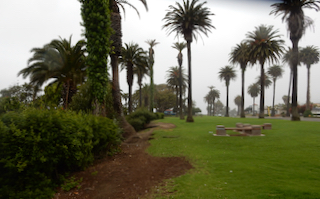
I visited the beach park (Wilders Addition Park) with a stairway to the beach northwest
of Pt. Fermin in San Pedro, Los Angeles Co., CA.
| 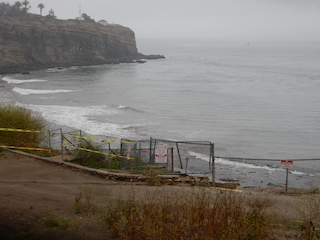
-
| 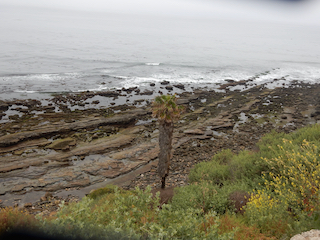
-
|
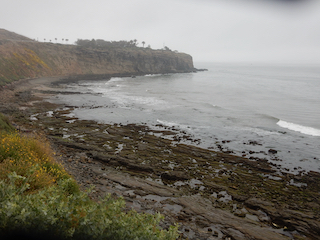
Point Fermin is in the distance.
| 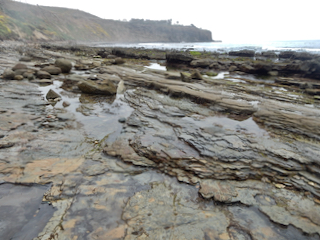
I intended to get on the beach earlier than the 7:22 am arrival time
recorded for this image by my camera. The low tide was quite good at -0.85 ft but early, about 17 minutes before sunrise at 5:29 am.
Two hours later, the tide was still quite low but on its way in. I am always happy to explore the higer zones and tidepools as well.
| 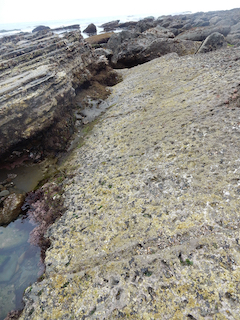
Intertidal rock platforms composed of relatively soft rock are riddled
with thousands of home depressions formed by southern spiny chitons, Nuttallina fluxa.
|
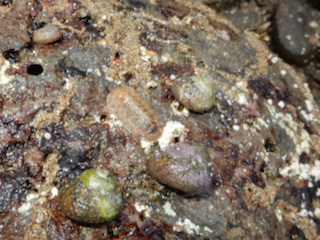
Three Tegula eiseni (western banded tegulas) next to a chiton, Lepidozona
pectinulata.
| 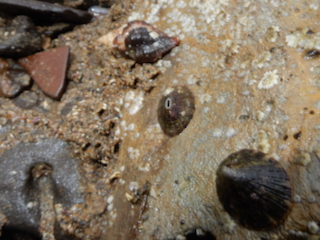
From the lower right, Lottia pelta, Fissurella volcano, and
Ceratostoma nuttalli (shield limpet, volcano keyhole limpet, and Nuttall's Hornmouth).
| 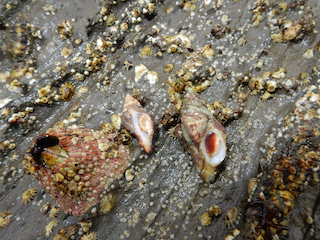
Here are two predatory snails, next to a
Tetraclita rubescens (red thatched barnacle.
are both Ceratostoma nuttalli (Nuttall's Hornmouth). The smaller of the two was in the last image. This whelk species feeds by drilling
into its prey, including various mussel species.
|
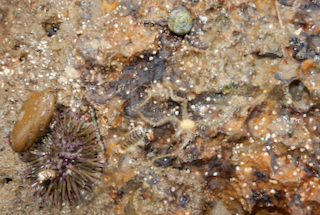
L to R: juvenile Strongylocentrotus purpuratus, Lepidozona
pectinulata, and Ophiothrix spiculata (purple urchin, pectinulate chiton, and spiny brittlestar)
| 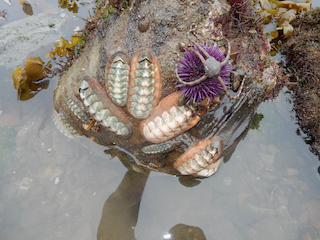
Stenoplax conspicua, Strongylocentrotus purpuratus, and Ophioderma panamense
(conspicuous chiton, purple urchin, and Panama brittle star)
| 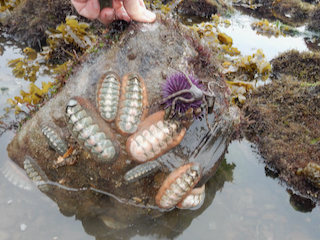
-
|
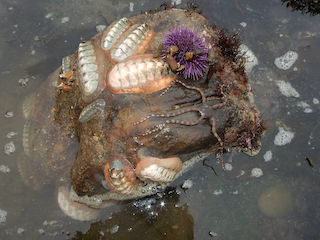
-
| 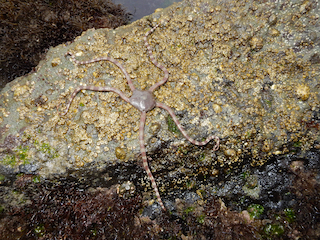
This is perhaps the most lightly colored Ophioderma panamense that I can recall seeing.
| 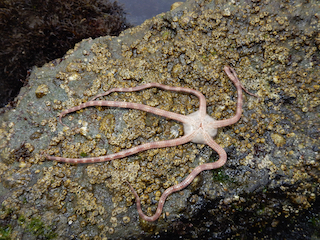
-
|
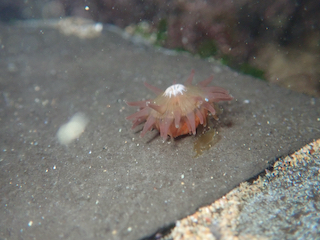
-
| 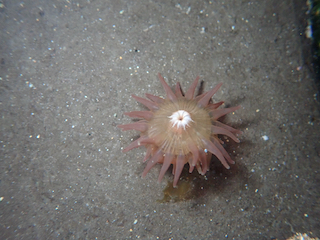
This tiny anemone, whose identification is still under investigation, was very quick
to detach itself from the rock I overturned.
| 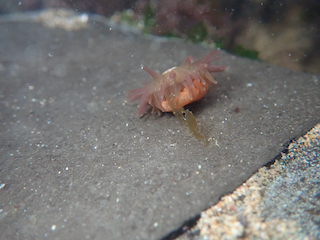
-
|
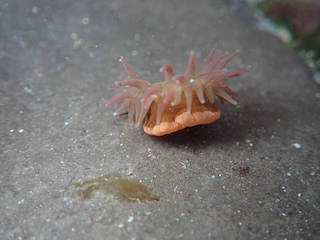
-
| 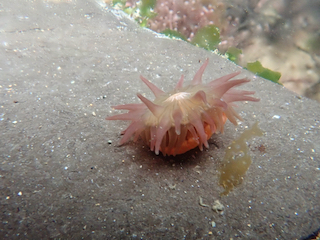
-
| 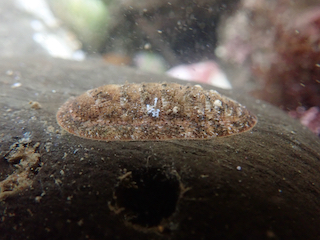
Lepidozona
pectinulata
|
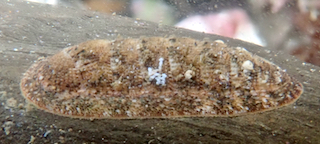
-
| 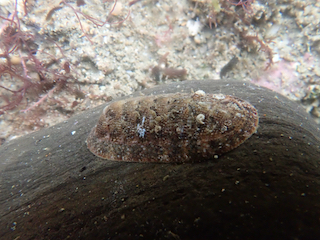
-
| 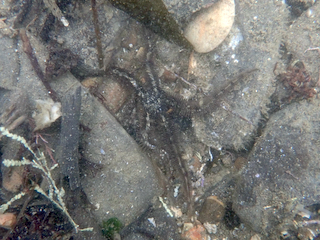
Ophiopteris papillosa (flat-spined brittle star)
|
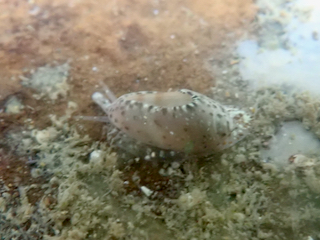
This tiny snail, Volvarina taeniolata,
is our only southern California representative of the marginellids or margin shell family (Marginellidae). According to the authorities at WoRMS/Molluscabase, the leading compilers of
such things, there are 374 accepted species worldwide of this particular marginellid genus
alone, but little is known about the biology of any marginellid snails.
I have usually observed our species on a rock removed from the water, and in this situation they will typically have their
mantle retracted to down near their foot, exposing most of their shell. I haven't seen them like this before with their mantle covering their
shell, like a cowrie.
| 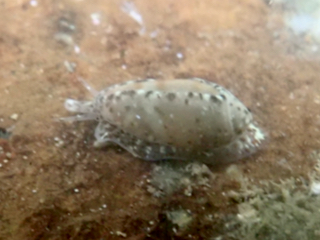
The distinguished molluscan expert, Dr. Vera Fretter (1976; J. moll. Stud. 42: 327-346), observed V. taeniolata from a kelp holdfast
feeding on the fresh muscle of a snapping shrimp, Crangon dentipes, and seemed unintersted in other
potential prey offered to it. At the time, this was the first observation of feeding in a marginellid. Much more recently, Alexander Fedosov and
colleagues (2019; J. moll. Stud., doi:10.1093/mollus/eyz028) have studied the systematics of the broader group of marginelliform snails within
the neogastropod superfamily, Volutoidea.
| 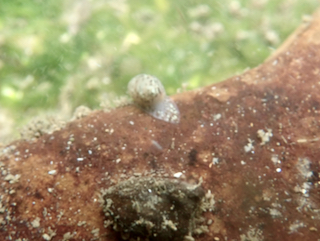
Here, at least six were on this still-underwater rock but none hung around for long
after I had overturned their rock. They either detached and rolled away with the water or else quickly crawled away like this one.
|
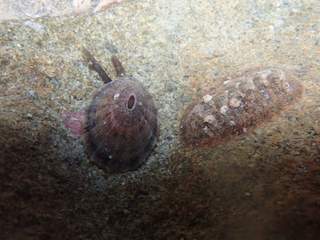
-
| 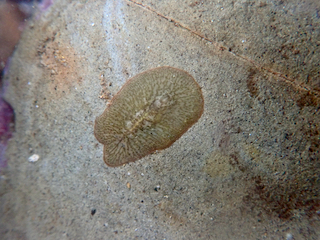
Tentative ID: Hylocelis californica (or possibly Interplana sandiegensis)
| 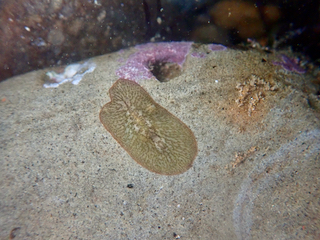
-
|
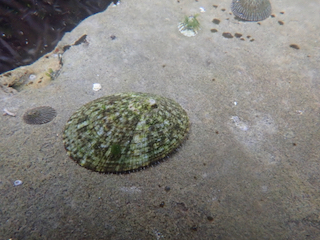
-
| 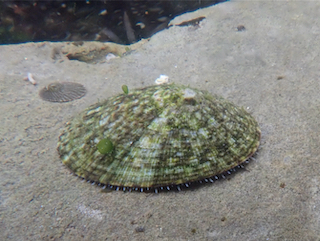
The large limpet in the foreground is Lottia limatula (file limpet). The smaller limpet behind
it in the background is L. strigatella.
| 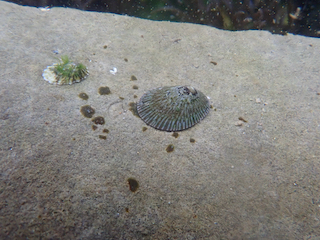
-
|
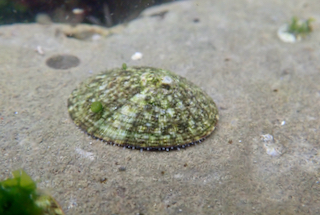
-
| 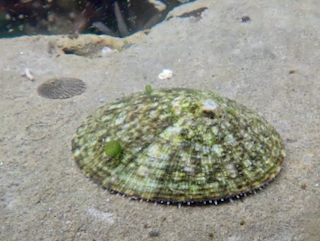
-
| 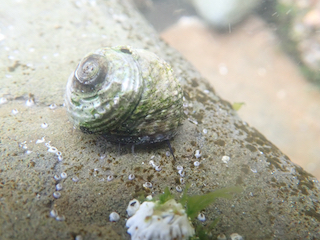
-
|
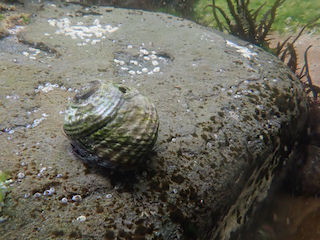
-
| 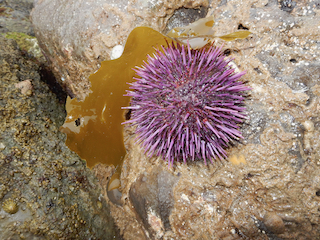
Strongylocentrotus purpuratus (purple urchin) feeding on drift kelp
| 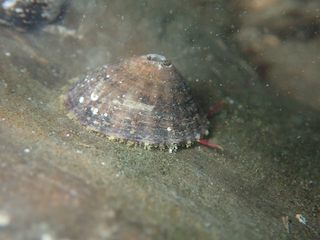
-
|
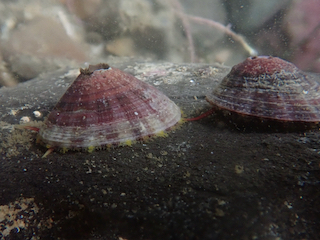
-
| 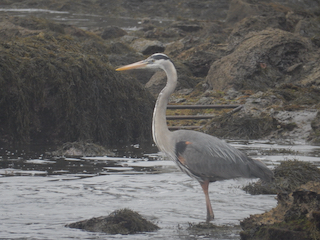
gbh
| 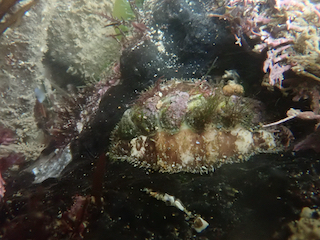
Nuttallina fluxa (southern spiny chiton)
|
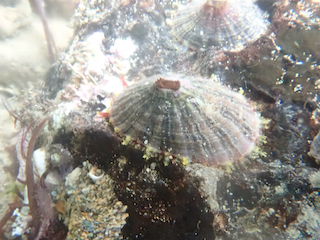
Fissurella volcano (volcano keyhole limpet)
| 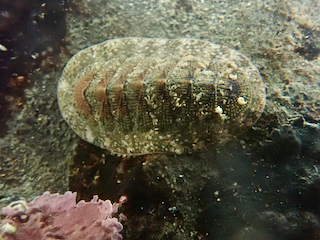
Lepidozona pectinulata
| 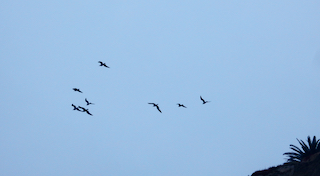
-
|
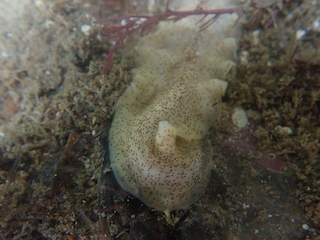
-
| 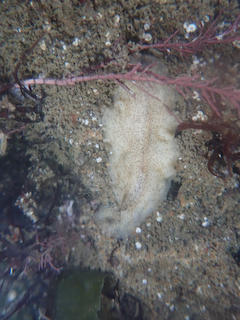
We call the polyclad flatworm, Enchiridium punctatum, the Dalmatian polyclad. It is common
in southern California. Like other polyclads, it is a predator.
| 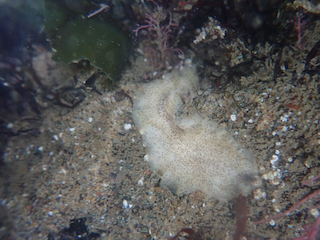
-
|
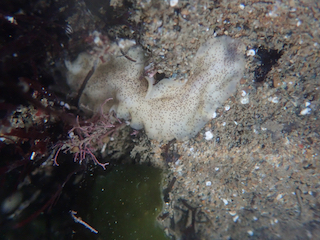
-
| 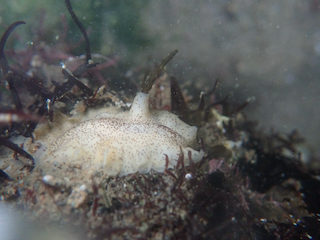
-
| 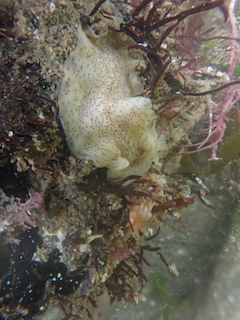
-
|
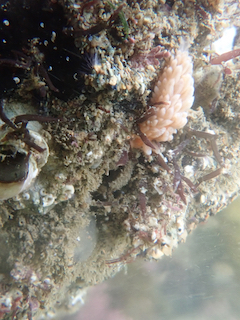
Anteaeolidiella chromosoma (Cockerell & Eliot, 1905) - I believe this nudibranch is better known from Mexico,
but it was originally described from Deadman's Island, San Pedro, California. This island was removed to fill in the estuary that
became the harbor in Los Angeles. I have read that it is also known from Costa Rica and Japan. Thanks to Brenna Green for help with
the identification.
| 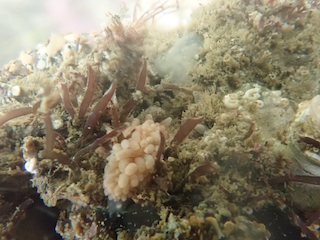
-
| 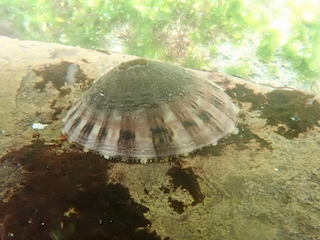
-
|
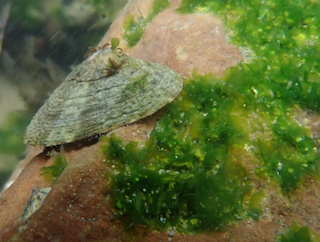
Lottia limatula (file limpet)
| 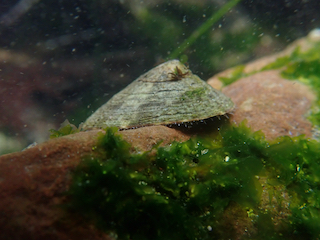
-
| 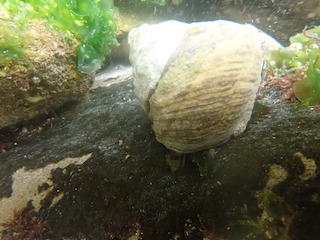
-
|
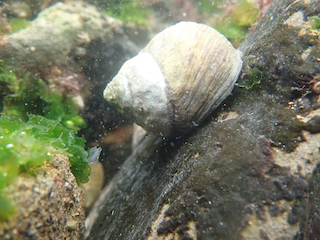
Tegula aureotincta (guilded tegula)
| 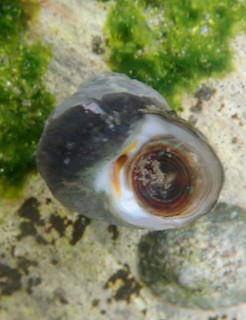
Note the orange color stain near the open umbilicus,
which is typical for T. aureotincta.
| 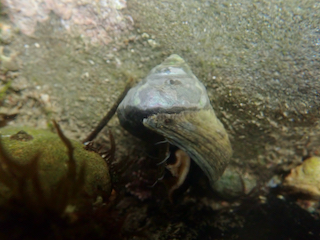
-
|
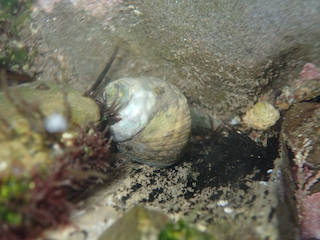
-
| 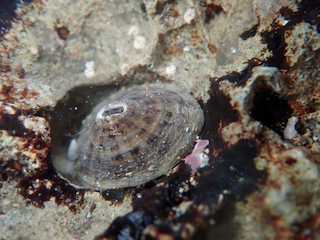
This Fissurella volcano seems to have a small ectoparasitic snail, a pyramidellid, on
its shell.
| 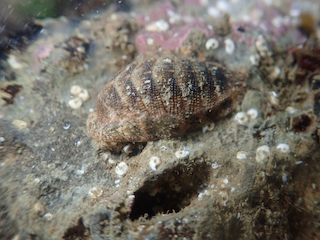
Lepidozona pectinulata
|
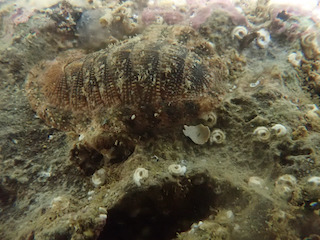
-
| 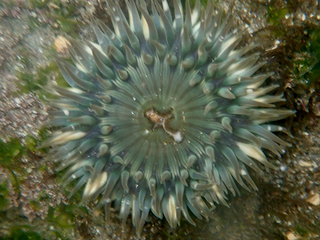
Anthopleura sola (sunburst anemone)
| 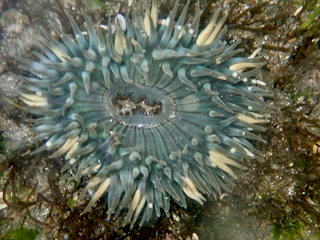
-
|
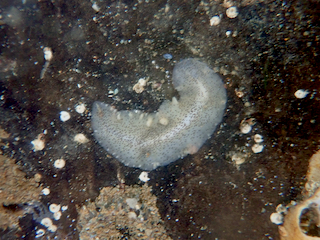
Another Enchiridium punctatum polyclad flatworm.
| 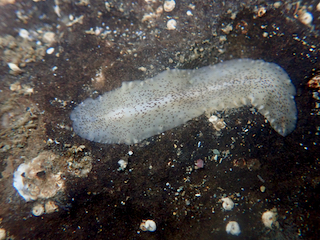
-
| 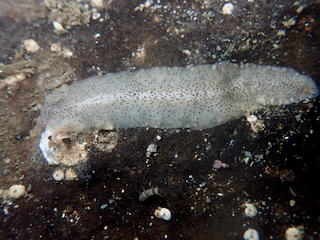
-
|
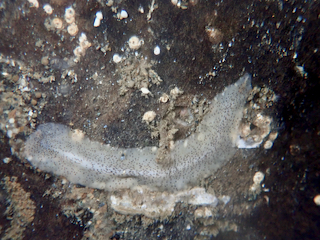
-
| 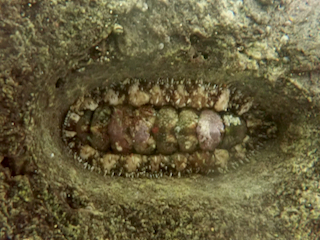
-
| 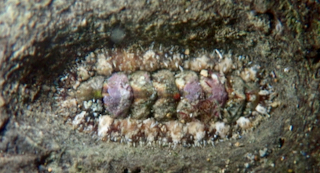
Nuttallina fluxa is in its home depression.
The mechanism of formation has not been studied but,
if it is like the rough limpet Lottia scabra, then it could weaken the rock with secretion of acidic mucopolysaccharides, and then remove loosened
grains with its radula.
|
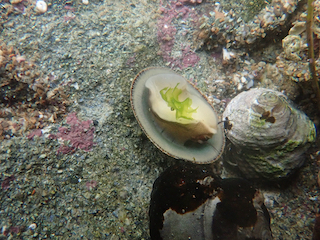
A volcano limpet is struggling to turn over before it is discovered by hermit crabs.
| 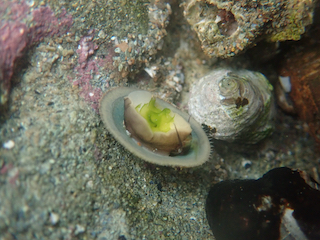
-
| 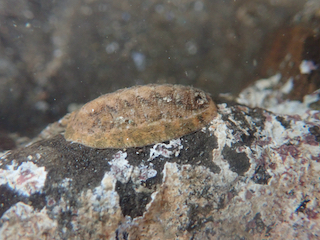
-
|
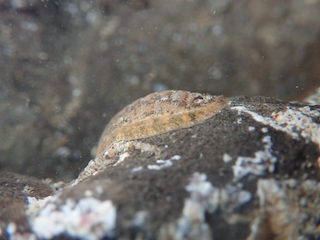
-
| 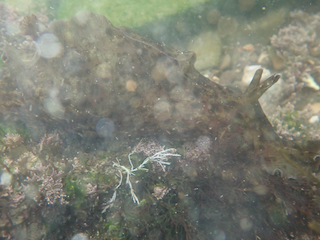
-
| 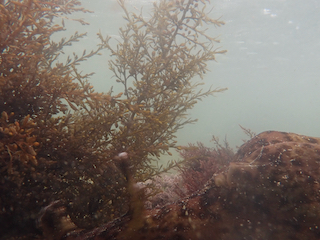
-
|
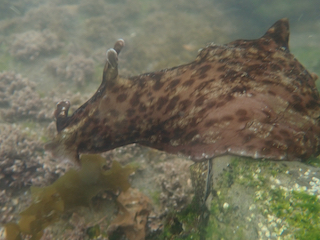
-
| 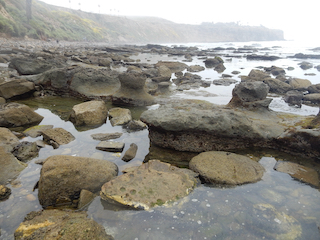
-
| 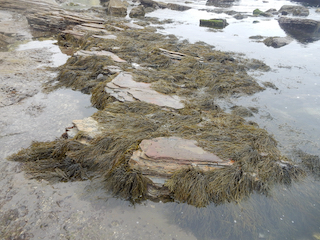
-
|
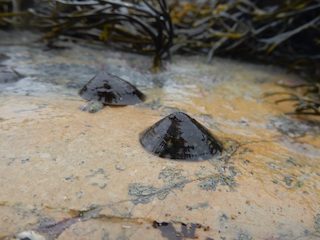
Lottia pelta (shield limpets) are often beneath the rockweed,
Silvetia compressa.
| 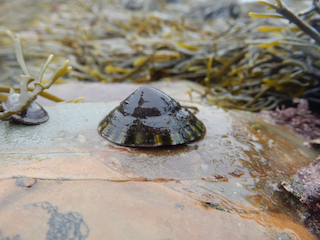
This L. pelta probably spent the first part of its life on the feather boa kelp,
Egregia menziesii, before it migrated upshore to live under rockweeds and started to change its shell to a rock morph pattern.
| 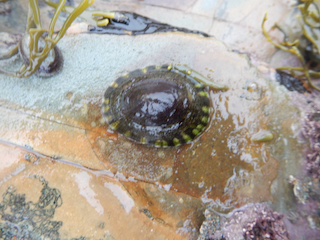
-
|
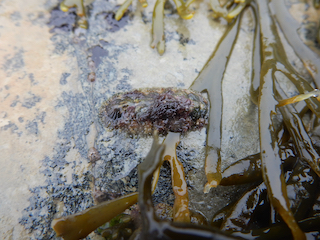
This Nuttallina fluxa was possibly eating rockweed, which
would be the first time I have seen this.
| 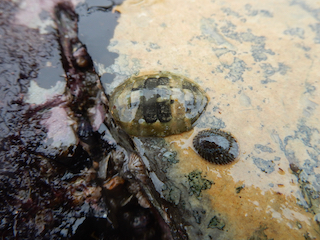
Hartweg's chiton, Cyanoplax hartwegii, is another grazer that often lives under
rockweed and was reported in one study to eat it. Grazers such as teguline snails greatly prefer drift kelps to rockweeds because the latter is
protected with unpalatable tannins.
| 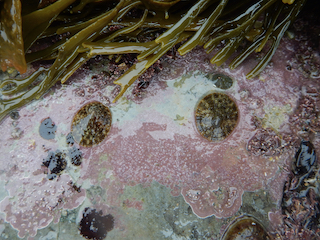
juvenile file limpets (Lottia limatula)
|
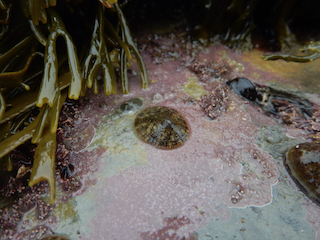
-
| 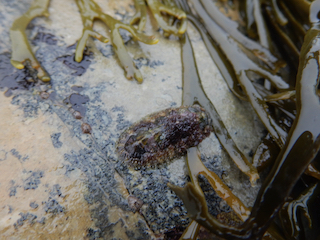
-
| 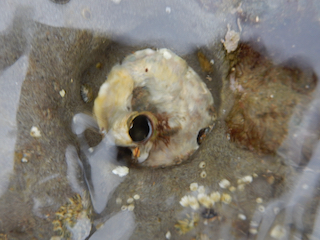
A vermetid worm snail, Thylacodes squamigerus
|
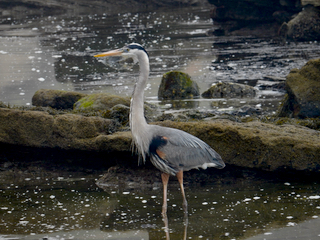
gbh
| 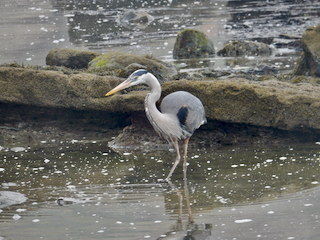
-
| 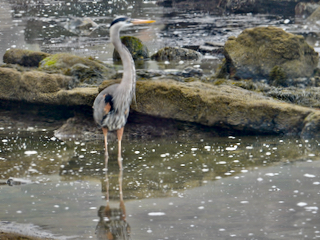
-
|
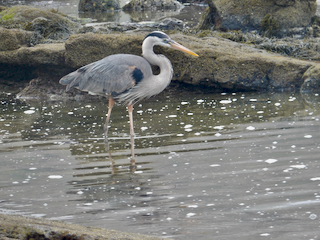
-
| 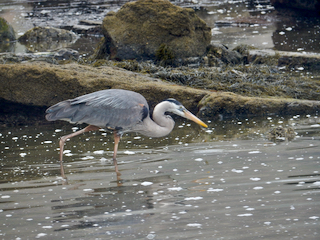
-
| 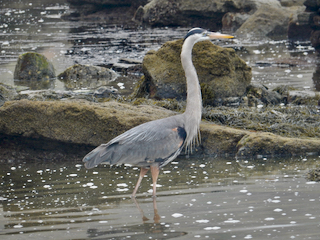
-
|
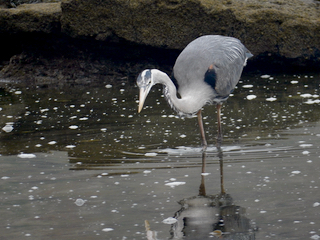
-
| 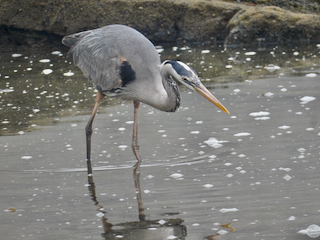
-
| 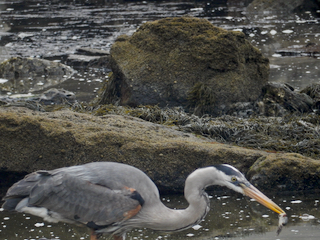
-
|
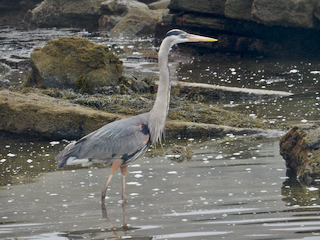
-
| 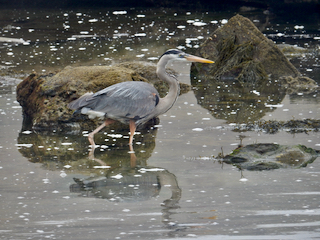
-
| 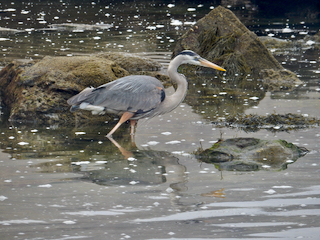
-
|
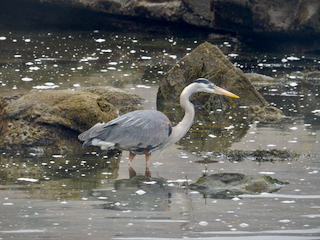
-
| 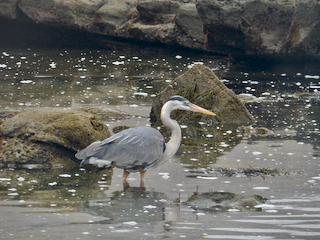
-
| 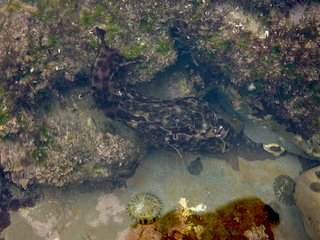
-
|
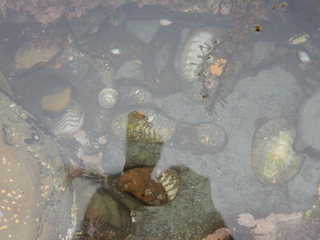
-
| 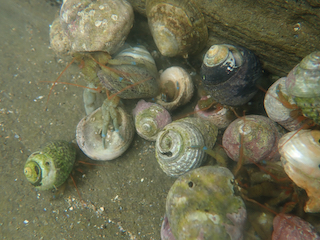
These Pagurus samuelis (blueband hermit crabs), have discovered an overturned limpet.
| 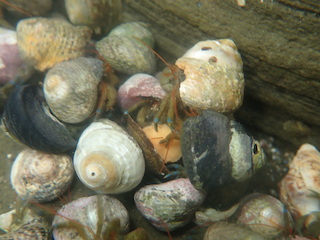
-
|
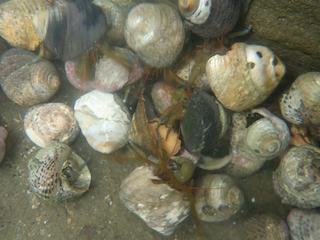
-
| 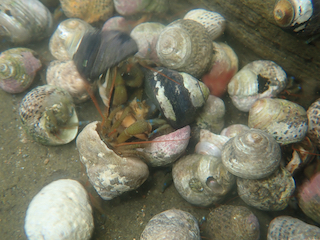
-
| 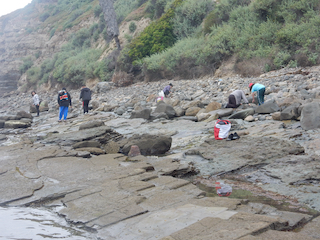
Quite a few people, including people in this image, were foraging in the tidepools for diverse critters.
|
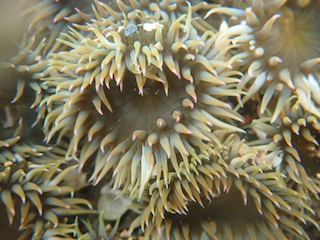
Anthopleura elegantissima is known as the aggregating anemone
but the groups are clones, not aggregations of distantly-related individuals, as is the case for some species such as sandcastle worms
(Phragmatopoma californica).
| 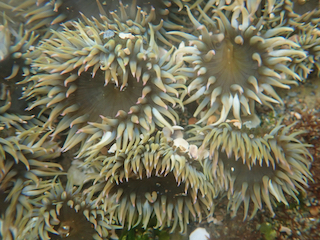
-
| 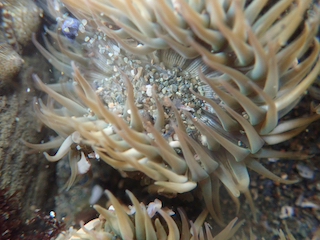
-
|
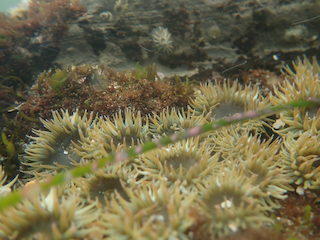
-
| 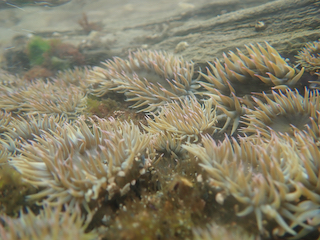
-
| 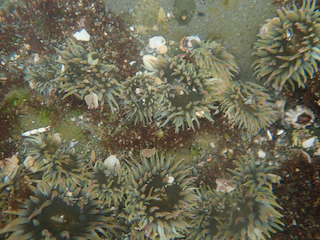
When I left at 8:45 am, about three hours and 15 minutes after the lowest tide level,
I noticed that that the clonally-dividing anemone,
Anthopleura elegantissima, were mostly along a single ridge that was as much out of water as underneath, and the water was still frustratingly
too shallow to get an underwater shot of even a few anemones. It seemed that the incoming tide was not going to submerge their microhabitat
unless I waited quite a bit longer. Still, they appeared to be feeding actively. Meanwhile, the nearby A. sola had been submerged in deeper pools for the entire time.
|
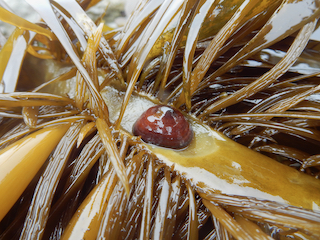
The seaweed limpet, Lottia insessa, is a specialist grazer
on featherboa kelp (Egregia menziesii). This one was on fresh drift kelp that had washed up on the shore.
| 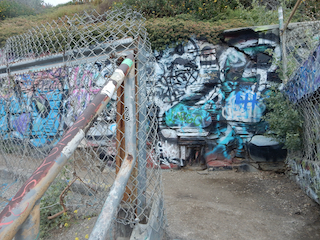
-
| 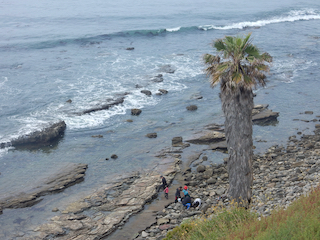
-
|
 Under Construction!
Under Construction! Under Construction!
Under Construction!